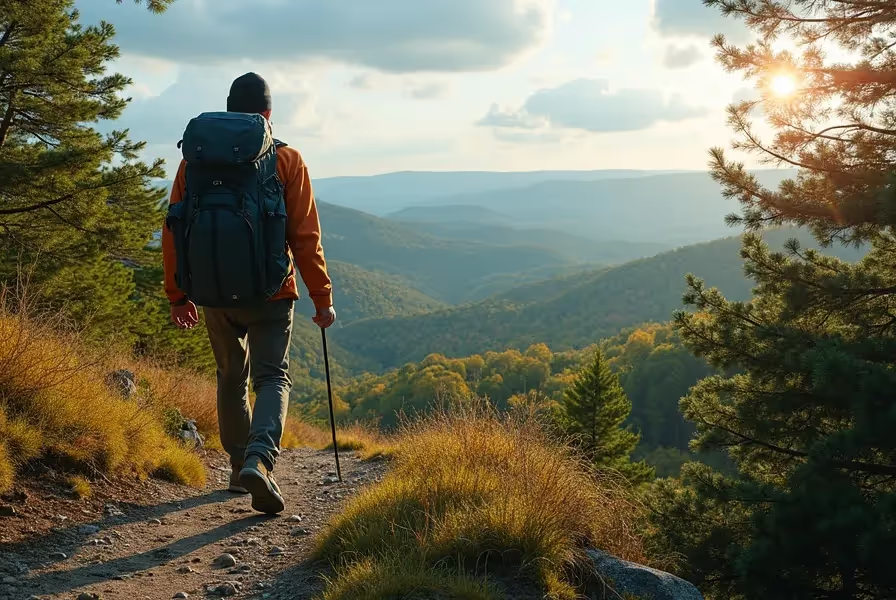Understanding Lane Splitting on Virginia Roads
Lane splitting is a common topic for motorcyclists and drivers alike, especially in busy states with heavy commuter traffic. If you ride a motorcycle in Virginia or are just curious about traffic laws, it’s crucial to understand whether riding between lanes—often called lane splitting—is legal, safe, and what alternatives exist. This guide breaks down Virginia’s lane splitting laws and what every road user should know for safety and legal compliance.
What Is Lane Splitting?
Lane splitting means riding a motorcycle between rows of slowed or stopped traffic going in the same direction. This technique is also called "white lining" or "stripe riding." Many riders see it as a way to save time and avoid stop-and-go congestion, especially in urban areas during rush hour.
This practice differs from sharing a lane, when two motorcycles ride side by side in a single lane, which is called lane sharing or two-abreast riding.
Is Lane Splitting Legal in Virginia?
The answer is clear: Lane splitting is illegal in Virginia. Motorcyclists are not allowed to ride between lanes of traffic or between adjacent lines or rows of vehicles. The Virginia Code specifies that every motorcycle shall be entitled to the full use of a lane, and no motor vehicle shall be driven in such a manner as to deprive any motorcycle of the full use of a lane. However, it does not authorize lane splitting or filtering.
- Code of Virginia § 46.2-857: Prohibits overtaking and passing in the same lane occupied by the vehicle being overtaken.
- Law Enforcement: Police officers may stop and ticket any motorcyclist found lane splitting or lane filtering between slow or stopped vehicles.
Motorcycle Safety Laws in Virginia
Virginia focuses on motorcycle safety and following traffic regulations. Understanding these rules will help you stay compliant and avoid citations or accidents:
- Helmet Use: All motorcycle operators and passengers must wear approved helmets.
- Eye Protection: Required if the motorcycle does not have a windshield.
- Lights and Signals: Motorcycles must use proper signals and keep lights on at all times when operating.
- Lane Positioning: You are allowed to use the full lane but not to split between lanes of traffic.
Why Is Lane Splitting Prohibited?
The primary reason for prohibiting lane splitting in Virginia is safety. Sharing space with larger vehicles while weaving between lanes can lead to:
- Increased risk of accidents due to sudden lane changes by cars
- Reduced visibility for both motorcyclists and drivers
- Potential for injury if vehicle doors are opened unexpectedly
- Confusion or anger among other drivers, increasing road rage incidents
While some states, such as California, permit certain forms of lane splitting or filtering, Virginia continues to prohibit the practice to reduce risks on its roads.
Alternatives to Lane Splitting in Virginia
Although you cannot split lanes in Virginia, you can use other legal strategies to ride safely and efficiently:
- Change lanes when traffic allows and is safe to do so.
- Maintain a safe following distance and increase visibility.
- Take full advantage of your lane by positioning yourself where you are most visible to drivers and have the best lane escape route.
- Plan your route to avoid peak travel hours when congestion is at its worst.
Frequently Asked Questions about Lane Splitting Laws in Virginia
Is lane splitting legal anywhere in the United States?
Lane splitting is legal only in California. Some other states, like Utah and Montana, allow modified forms of lane filtering under certain conditions. Virginia does not permit lane splitting or lane filtering at this time.
What is the penalty for lane splitting in Virginia?
If you are caught lane splitting in Virginia, you may receive a traffic citation, face fines, and possibly get points on your driver’s license. The specific penalty depends on the circumstances and law enforcement’s assessment.
Is lane filtering the same as lane splitting?
Lane filtering involves a motorcyclist moving between stopped vehicles to the front at an intersection, usually at low speeds. Lane splitting refers more broadly to riding between moving vehicles in traffic. Both are prohibited in Virginia.
Can two motorcycles ride side by side in a single lane in Virginia?
Yes, Virginia allows two motorcycles to ride side by side in one lane if both riders agree. However, cars and other vehicles are not permitted to share a lane with a motorcycle.
Are there any proposals to legalize lane splitting or lane filtering in Virginia?
As of early 2024, there are no active laws or proposals to legalize lane splitting or lane filtering for motorcycles in Virginia. It is important to follow current laws to avoid legal issues and keep roads safe.
How do Virginia motorcycle safety laws compare with neighboring states?
Virginia's laws are similar to most East Coast states, where lane splitting and filtering are not permitted. Surrounding states such as Maryland and North Carolina also ban lane splitting, but always check current local laws before riding across state lines.
Tips for Safe Motorcycle Riding without Lane Splitting
- Practice defensive driving; always be aware of your surroundings.
- Make yourself visible with reflective gear and keep your lights on.
- Follow traffic rules and posted speed limits at all times.
- Monitor changes in traffic patterns and adjust your lane position as needed.
- Take a Virginia motorcycle safety course for updated knowledge and skills.
How to Stay Updated on Virginia Motorcycle Laws
Motorcycle and traffic laws can change. Review the latest Virginia Department of Motor Vehicles (DMV) guidelines. Join local riding groups or safety organizations for the latest updates. Being proactive helps you stay safe and compliant on every ride.











.svg)



